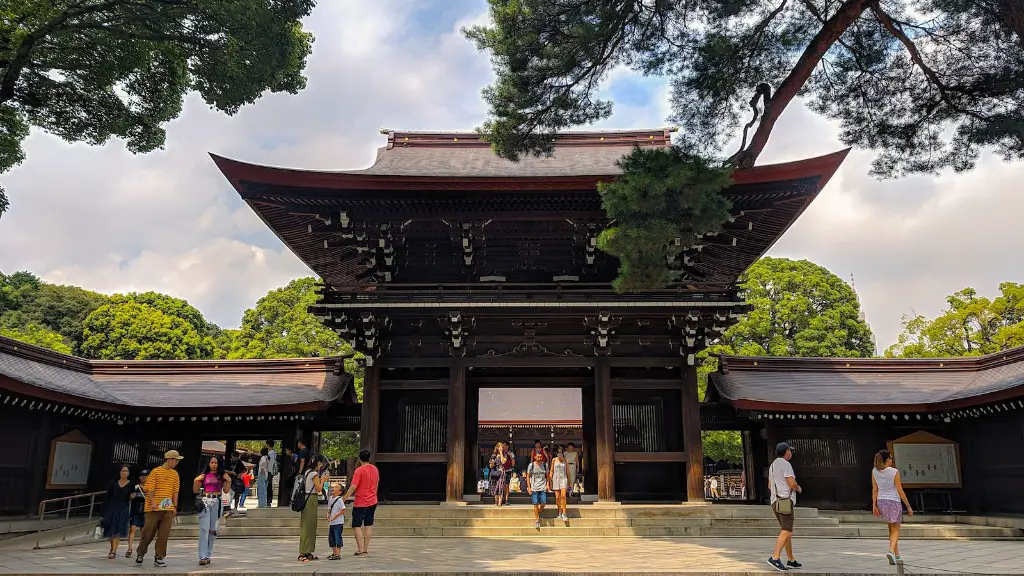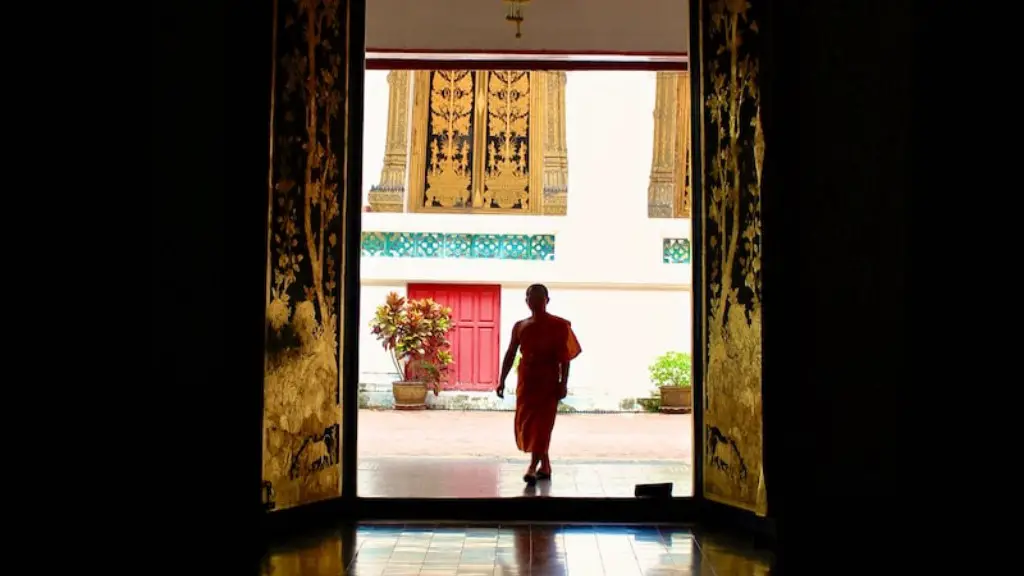Overview Of Hinduism
Hinduism is one of the oldest religions in the world with its origins dating back thousands of years. It is a religion that originated in India, with over one billion adherents of all ages worldwide and over a billion devotees in India alone. The sacred texts of Hinduism are known as the Vedas, as well as the Upanishad and Bhagavad Gita. There are four main denominations of Hinduism: namely, Shaivism, Vaishnavism, Shaktism, and Smarta.
Hinduism is polytheistic, meaning it is the worship of multiple gods. The primary deities worshipped in Hinduism are Brahma, Vishnu, and Shiva. Brahma is commonly referred to as the creator, Vishnu as the preserver, and Shiva as the destroyer. These deities are also known as the Trimurti. Hindus believe that the gods interact with and influence the lives of humans and that each person can individually choose and develop a personal relationship with any of the gods.
Nature Of Hindu Polytheism
The nature of Hindu polytheism is complex and varies according to various sects and traditions. Some Hindus acknowledge the supreme god Brahman as the source of the numerous divinities and view the other gods and goddesses as aspects or manifestations of Brahman. When different aspects of Brahman are personified as gods or goddesses, they are seen as forming different hierarchies or pantheons.
Hinduism also recognizes the unity of all life, and all gods and goddesses are seen as representing different aspects or cycles of life or nature. Every deity is symbolic of a certain aspect of the one divinity and is worshipped and prayed to accordingly. Many Hindus also worship avatars of the gods, which are aspects of the deity that take the form of humans or animals. One example is the avatar of the god Vishnu, Rama, who was known for his victory over the demon king Ravana.
Festivals Celebrated By Hindus
Hinduism has a strong tradition of festivals that are celebrated annually. These festivals are believed to facilitate the interconnection among various gods and goddesses, as well as of people in general. The festivals can be both spiritual and social in nature and many include processions, feasts, music and dancing. Each festival has its own unique mythology and rituals connected to it.
The major festival celebrated in the Hindu tradition is Diwali. It is celebrated in honor of Lord Rama, who is an incarnation of Lord Vishnu, and marks the arrival of Lord Rama after slaying the wicked King Ravana. Another important festival is Holi, which marks the onset of spring and celebrates the victory of divine over evil. During Holi, colors are thrown onto each other to signify the victory of good over evil. There are also numerous regional festivals that are celebrated in accordance to the traditions and beliefs in each part of the country such as Ganesh Chaturthi in Maharashtra, Navaratri in Gujarat, Chhath in Bihar, and Onam in Kerala.
Variety Of Beliefs
Polytheism in Hinduism is seen as the belief in the existence of multiple gods. However, this does not necessarily equate with a lack of monotheism in Hinduism as many Hindus worship a single Supreme Being, Brahma, who is the creator of all. In addition, there are many Hindus who recognize the one Supreme Being, yet also simultaneously worship the individual gods and goddesses as different representations of this single divine entity. This is known as henotheism or “one God among many”.
Hinduism is also known for its wide variety of beliefs. There can be different approaches to religiousness within the same sect and individual Hindus can have a mix of beliefs, rituals, and practices. Hindus also practice Ahimsa (non-violence), karma (causing effects based on action and deeds), and positive thinking. Although Hindus may choose to worship a single god, they are simultaneously open to the belief in many gods.
Symbolism In Hinduism
The gods in Hinduism are not seen as forces to be feared but rather figures to be venerated and honored. Each god or goddess has their own symbols and stories associated with them that help describe their role and nature. For example, Lord Shiva is often depicted with his third eye and described as being both destructive and creative, while the goddess Lakshmi embodies wealth and grace. Hindus often contemplate these symbols and stories as a means to gain insights into their own lives.
The symbolism in Hinduism can often be seen in various forms of art and architecture. The Taj Mahal, for example, is believed to be a homage to the Hindu gods Shiva and Vishnu, as the dome of the structure is said to be inspired by Lord Vishnu and the arches are thought to be reminiscent of Lord Shiva. Symbols of Hindu gods and goddesses can also be seen in everyday religious practices, such as the use of Om, which is considered a holy symbol of the Supreme Being.
Practices Of Hinduism
Hinduism differs from other religions in that it is more focused on individual spiritual exploration. Hindus are not just followers of a religion but practitioners of an ancient tradition that encourages personal exploration and experimentation. Practice, rather than creed, is the key to understanding Hinduism. Hindus turn to various practices, such as yoga, meditation, and rituals to connect with the divine.
Yoga is based on the unification of mind, body, and spirit and is a practice through which Hindus reach higher states of awareness. Meditation allows Hindus to quiet the mind, creating space to be more attuned to their inner self and, therefore, to the divine. Rituals serve as visible and tangible ways to honor the gods and communicate with them.
Significance Of The Cow In Hinduism
The importance of the cow in Hinduism is deeply rooted in the Vedic tradition. Hindus consider the cow symbolically and as a provider of sustenance. She is an integral part of the Hindu culture and is honored and respected as a sacred animal. The Hindu scriptures consider cows to be the mother of civilization and thus, Hindus are expected to take care of them. In fact, the killing of cows is one of the most severe sins in Hinduism, and various laws and customs exist to protect cows from abuse and negligence.
Cows are considered to be a holy and auspicious symbol of prosperity and good fortune in Hinduism. Their milk embodies the nutrients of love and nourishment, while their urine and dung are used in several Hindu ceremonies as a purifying agent. The cow’s tail is also seen as a symbol of good luck, hence why it is often decorated with auspicious symbols.
Why Is Image Worship Popular Among Hindus
Image worship in Hinduism consists of either a physical representation of a deity or an abstract symbol used to represent a concept or conceptual idea. Hindus consider the gods to be both physical beings and intangible, metaphysical energies, so worshipping them harmoniously with both of these aspects allows for a more complete devotion to the divine. Hindus believe that the gods dwell within the images and objects used to worship them and the divine is experienced within these images.
In Hinduism, worshipping an image of a deity helps to invoke and channel the energy of the deity, allowing devotees to connect with the divine more easily. Hindus also use images of the deity as a way to communicate and interact with the divine. By presenting images of the gods and goddesses to the divine, Hindus provide offerings as a way of expressing their devotion and seeking the divine’s help and guidance in all aspects of life.
Conclusion Of Hindu Polytheism
Hindu polytheism is a complex tradition that encompasses many aspects and beliefs. Through the worship of multiple gods, Hindus seek to honor and venerate the entire spectrum of divinity, honoring each god or goddess depending on the need and situation. There are numerous festivals and rituals that are associated with polytheism and these serve to acknowledge, celebrate, and explore various aspects of life. Hindu polytheism functions as an understanding that all gods and goddesses represent different cycles of life and, together, form a single, unified divine energy.

